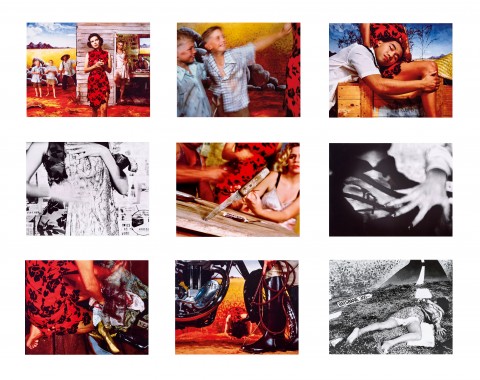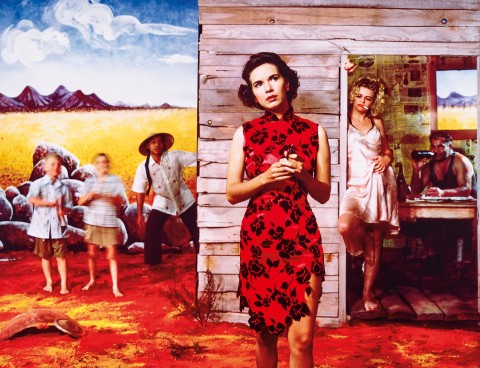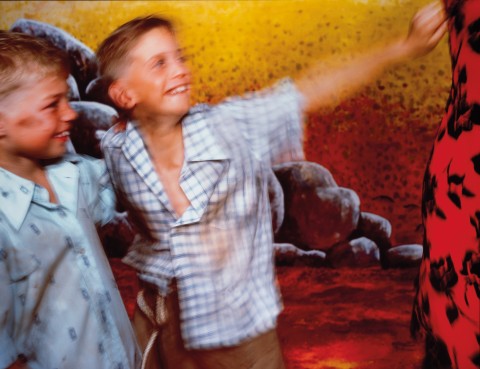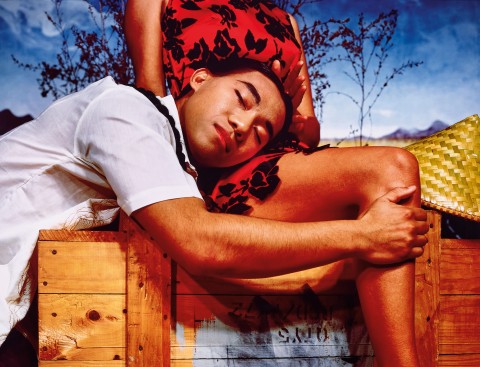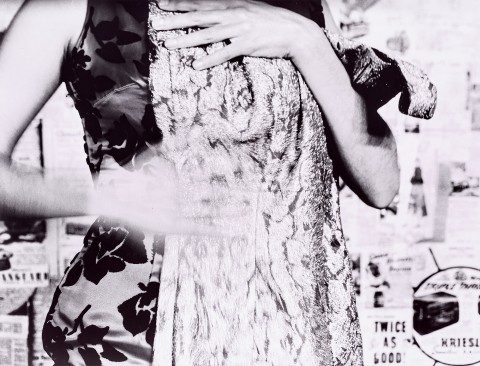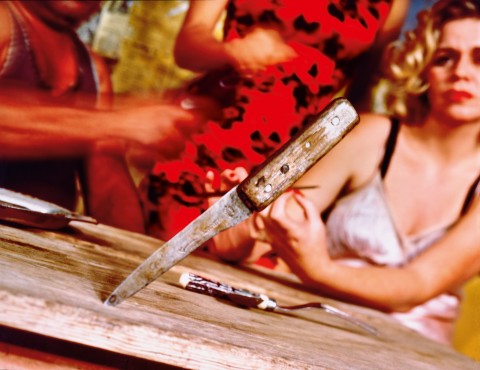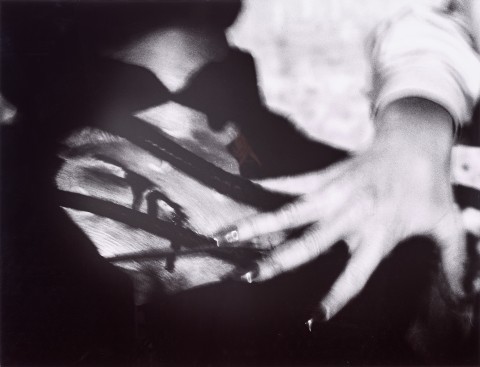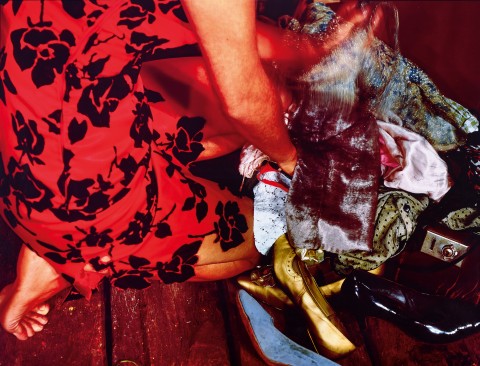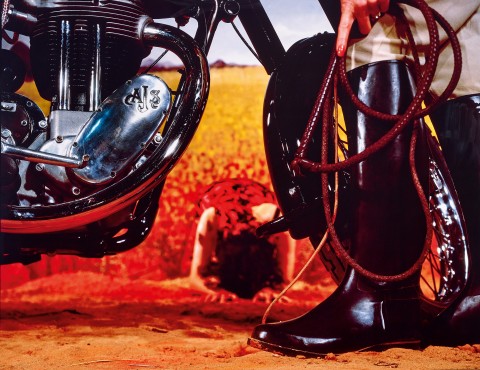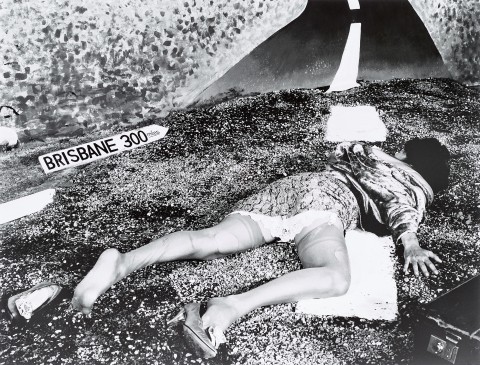SOMETHING MORE, 1989
TRACEY MOFFATT
the full suite of six Cibachrome and three gelatin silver photographs
104.5 x 144.5 cm (each, frame)
98.5 x 128.0 cm (each, sheet)
each signed, dated and inscribed verso: T. Moffatt '89 A/P
Private collection, acquired directly from the artist
Christie’s, Contemporary Art, Melbourne, 25 June 2002, lot 52
Private collection, Sydney, acquired from the above
(Selected) Other examples of this suite have been exhibited and published widely including:
Something More, Australian Centre for Photography, Sydney, and touring through regional galleries, 1989
Tracey Moffatt, Institute of Modern Art, Brisbane and Asia Link, Melbourne, 1990 (illus. in exhibition catalogue, p. 55)
Antipodean Currents, John F. Kennedy Centre for Performing Arts, Washington D.C., USA, 9 – 16 October 1994 (and touring, another example, illus. in exhibition catalogue, pp. 86, 87)
Tracey Moffatt, Kunsthalle Wien, Vienna, 10 April – 7 June 1998 and travelling throughout Europe (illus. in exhibition catalogue, p. 55)
Tracey Moffatt, Nassau County Museum of Art, New York, February – April 2001
Tracey Moffatt, City Gallery Wellington, Wellington, 1 February – 26 May 2002 (illus. in exhibition catalogue, p. 26)
Tracey Moffatt, Museum of Contemporary Art, Sydney, 17 December – 29 February 2004
Tracey Moffatt. Between Dreams and Reality, Spazio Oberdan, Milan, 28 June – 1 October 2006 (illus. in exhibition catalogue, p. 120)Tracey Moffatt, Lismore Regional Gallery, New South Wales, 13 March – 25 April 2009
Know My Name: Australian Women Artists 1900 to Now, National Gallery of Australia, Canberra, 14 November 2020 – 4 July 2021 (another example)
Williams, D., and Simpson, C., Art Now. Contemporary Art Post-1970, Mcgraw-Hill Book Company, Sydney, 1994, p. 141 (illus., another example)
Newton, G., Tracey Moffatt: Fever Pitch, Piper Press, Sydney, 1995, pp. 13, 16, 17 (illus.), 39 (illus., another example)
Martin, A., 'Tracey Moffatt's Australia (A Reconnaissance)', Parkett, no .53, 1998, p. 23 (illus. another example)
Reinhardt, B. et al., Tracey Moffatt: Laudanum, Hatje Cantze, Germany, 1999, p. 10 (illus., another example)
Travis, L., ‘Mirage: Drysdale and Moffatt in the Australian Outback’, Art and Australia, Fine Arts Press, Sydney, 2000, vol. 37, no. 4, pp. 548 – 555 (illus. p. 552, another example)
Summerhayes, C., The Moving Images of Tracey Moffatt, Edizioni Charta, Milan, 2007, p. 15 (illus., another example)
Other examples of this suite are held in the collections of the National Gallery of Australia, Canberra, Museum of Contemporary Art, Sydney, Art Gallery of New South Wales, Sydney, the National Gallery of Victoria, Melbourne, Murray Art Museum Albury, New South Wales, and Artbank, Sydney
mOFFATT.jpg
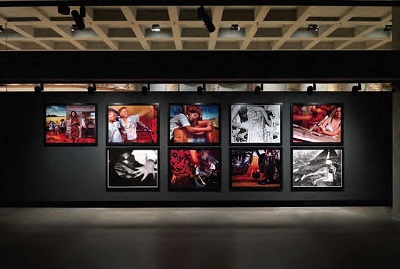
The full series of nine Cibachrome prints, Collection MONA Museum of Old and New Art, Hobart
© reproduced with the permission of Copyright Agency and Roslyn Oxley9 Gallery
Tracey Moffatt’s seminal photographic series from 1989, Something More, presents the artist as the protagonist of a pastiched and tawdry melodrama: a wide-eyed ingénue in a cheongsam dreaming of deliverance from her shack in a featureless landscape some 300 miles from the Big Smoke. The collection of nine photographs (six Cibachrome prints and three silver gelatin monochromes) appears as a series of freezeframes of a film that was never produced. Perhaps Moffatt’s most famous work, Something More established a defining characteristic of her artistic practice for years to come: a multiplicity of readings and a presentation of an open-ended, enigmatic narrative. Applying the cinematic art of montage to still photography, Moffatt presents a narrative sequence disrupted by omitted details and abrupt changes in composition and style. These lacunae allow Moffatt to hand over the final authorship of her work to the audience, endowing them with the authority to imagine what may fill the blanks.
With carefully contrived, lush artifice, Moffatt’s tableaux transcend simple photographic practice. Instead, they inhabit an in-between photofilmic space reminiscent of popular cinema, particularly B-grade teledramas. Tracey Moffatt is thus a contemporary storyteller, creating often humorous social commentary derived from her personal memory, classic tropes of Hollywood film, current affairs, and history itself. She belongs to a generation of photographic artists from the 1980s (such as Jeff Wall, Cindy Sherman, and Yasumasa Morimura) who each subverted the camera’s claim to naturalism by creating fanciful tableaux sometimes entirely incompatible with reality, harnessing images and tropes from the incessant stream of photomedia in which they were raised.
Moffatt created this series in 1989, the year following the Bicentennial of colonised Australia, during an artistic residency at the border town of Albury. There she enlisted the help of local art schools and the community, directing them around painted sets of rural hinterlands. The heavily saturated colours of the red soil, and blue skies, swirling clouds and swaying wheatfields bordered by spindly Drysdale-esque gumtrees are familiar to Australian audiences from the tradition of modern Australian landscape painting. It is clear, however, that the actors of this drama do not profit directly from the agricultural wealth of their environs. 1 Following the first frame, an alterpiece-like image (Something More No. 1) the successive frames of the series are shot from a low viewpoint, blurred and cropped so as to obscure the protagonist’s face. We do not see her expression as her clothes gradually disintegrate, signifying the progressive debasement of her character that up to her tragic demise on the side of the road, salvation just out of reach. These close-ups and cutaways draw the focus toward the cheap materiality of Moffatt’s props, and the seductive violence they suggest. The broken detritus of cars, remnants of other failed journeys, in the first frame presage the inevitable futility of the girl’s aspirations. While this adaptation of the story of the Fallen Woman is only implied, it is rendered with wry humour, a strong foundation of autobiographical subjectivity and contradictory feelings of pleasure and unease. The aesthetic sensuality of the images and the voyeuristic appeal of the penny-dreadful drama attract the viewer, yet its obvious artifice and puzzling narrative creates instead a distancing effect, stymieing any deep identification with the characters.
Something More quickly won Tracey Moffatt international acclaim and was exhibited extensively throughout the world alongside her short film Night Cries, screened at the 1990 Cannes Festival. While the artistic references for this series are in part subjective and personal, Moffatt is insistent that her work should speak to the human condition as a whole, not merely reflective of her experience as a woman or a first nations person. A desperate longing to change the course of one’s destiny is a desire that transcends ideas of race and class, and one that has sustained folk tales in text, music and images the world over for many hundreds of years. Her original visual repertoire drawn from the sultry glamour of Hollywood, mass-produced advertisement pulp and generic character stereotypes, allows Moffat to create a story that could be familiar to any society with ethnically diverse populations and decaying colonial power structures.
Following a period of great social and political change in the mid-20th century, Aboriginal artists flourished in urban centres, using art to foster political activism and create space for self-representation. In the early 1980s, many Indigenous Australian photographers grouped together in key exhibitions and events now recognised as cornerstones of a coherent artistic movement. While Tracey Moffatt was present and active in this group early in her career, she soon preferred to forge her own path. Her titillating images straddling the spheres of private experience and public performance were instead aimed at a target audience of the international avant-garde. While ostensibly addressing the same questions of race and gender, here they reached wider appeal. 2 The wistful expression on her face is central to Moffatt’s message and artistic practice. Catherine Summerhayes notes in her 2007 survey of Moffatt’s cinematic practice that this look is pervasive throughout Moffatt’s oeuvre – ‘Moffatt looks out beyond the foreground of her visual frames; she is looking for “something more” than the immediately obvious. Her searching gaze is directed outwards at what being in the world means.’3
Although Moffatt plays the part of the fatefully doomed young woman in Something More, her presence as the protagonist in this story betrays the reliability of any autobiographical foundation. Moffatt’s artistic ambitions have undeniably been realised. She can be counted among Australia’s most successful visual artists and filmmakers, collecting accolades locally and internationally. In 2017, Moffatt was chosen to represent Australia in the 57th International Art Exhibition at the Venice Biennale. Complete sets of these seminal prints in private hands are rare and have not been seen at auction in Australia for over fifteen years.
1. Newton, G., ‘Tracey Moffatt: Histories/ Herstories’ in Antipodean Currents: Ten Contemporary Artists from Australia, Guggenheim Museum, New York, 1995, p. 84
2. Wallace, M., ‘Tracey Moffatt’s Visual Pleasures’ in Brought to Light II: Contemporary Australian Art 1966 – 2006, Queensland Art Gallery, Brisbane, 2007, p. 239
3. Summerhayes, C., The Moving Images of Tracey Moffatt, Edizioni Charta, Milan, 2007, p. 16
LUCIE REEVES-SMITH
